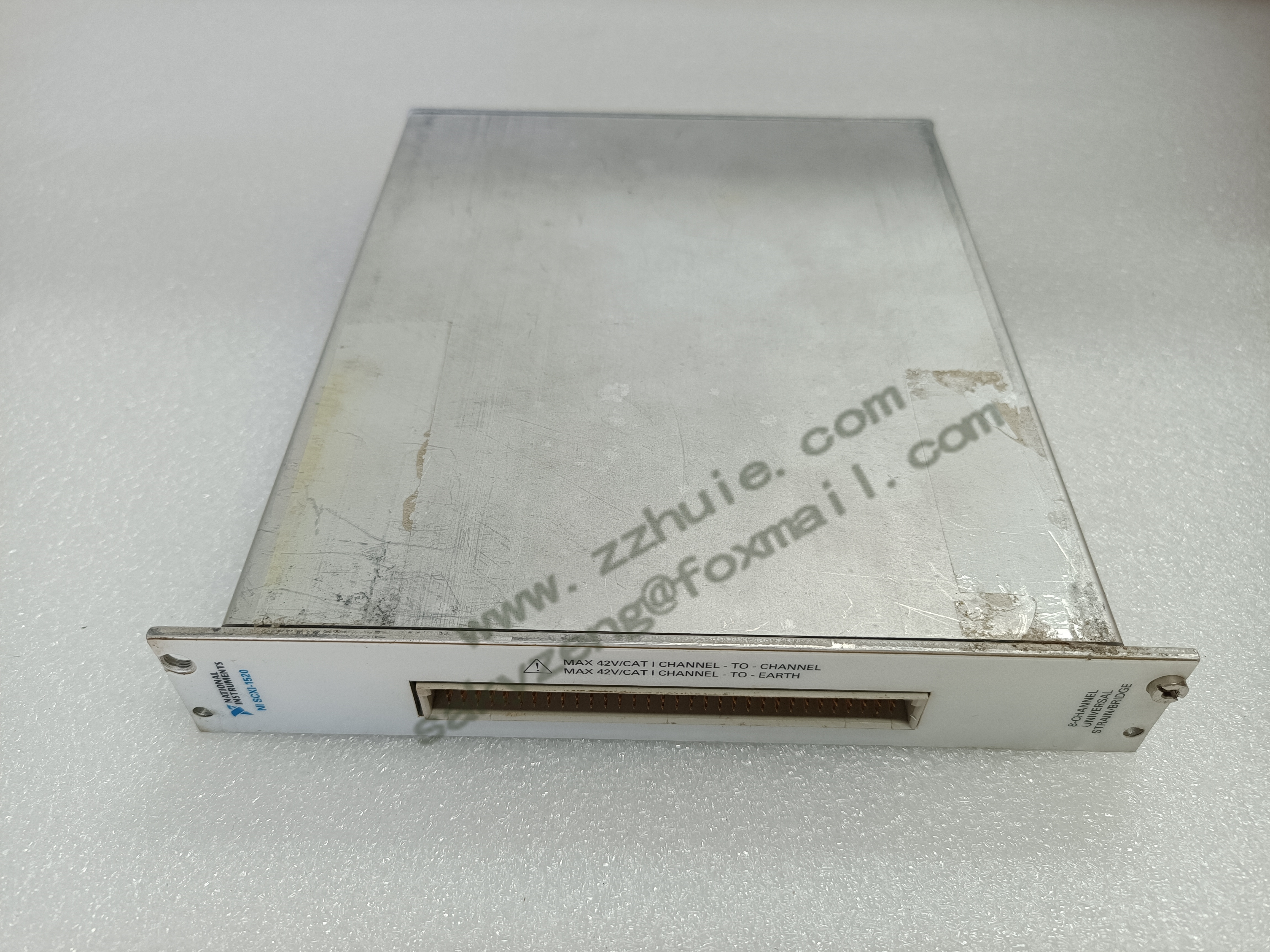

— product —
 customer service +86 18020721390
customer service +86 18020721390 Email:sakyzeng@foxmail.com
Mobile:+86 18020721390
Telephone:+86 18020721390
Address:Hongshan Hotel, No. 42 Hongshanhu Road, Beijie Street, Xixiu District, Anshun City, Guizhou Province
National Instruments
Brand: National Instruments
Model: NI SCXI-1520 | Universal Strain Gauge Input Module
Origin: Switzerland
Warranty: 365 days
Quality: new/second-hand
Delivery method: express delivery
product details
NI SCXI-1520 is a universal strain gauge input module produced by National Instruments in the United States
· Number of channels: It has 8 analog input channels.
· Input type: Mainly used for strain/bridge input, it can read signals from strain, load, force, torque, and pressure sensors.
· Amplifier and Filter: Each channel has a programmable amplifier and a programmable 4-pole Butterworth filter, which provides sharp cutoff to block noise while maintaining
high flatness in the passband.
· Incentive source: Each channel has a single programmable incentive source ranging from 0 to 10 V, and each channel has remote sensing functionality.
· Sample and hold function: It has synchronous sample and hold function and can be used for synchronous sampling applications using sample and hold or T/H circuits.
· Working temperature range: The recommended working temperature range is 0 to 50 ° C.
· Size and Weight: Weighing 10.4 ounces, the dimensions are 1.2 x 6.9 x 8.0 inches.
· Communication interface: Running with NI-DAQmx driver software, it can cooperate with NI-DAQ 7 for high-speed acquisition. In parallel mode, each channel points to a
different analog input channel of the DAQ instrument connected to it. This module supports communication interfaces such as Ethernet and USB.
· Strain measurement: widely used in the field of strain measurement, such as in material mechanics testing, it can accurately measure the strain changes of materials during
the stress process. The deformation of the material is converted into electrical signals through strain gauges, and after being conditioned and collected by the SCXI-1520
module, it is transmitted to a computer for analysis to evaluate the mechanical properties of the material.
· Sensor signal conditioning and acquisition: It can be used in conjunction with various sensors, such as pressure sensors, torque sensors, force sensors, etc., to amplify, filter
and adjust the weak electrical signals output by the sensors, and convert them into digital signals for subsequent data processing and analysis. In industrial automation
production lines, real-time monitoring of pressure, torque and other parameters in the production process can be carried out to ensure production quality and safe operation
of equipment.
· Experimental research: Used in various physical, chemical, biological and other experimental studies to collect simulated signals during the experimental process. For example,
in acoustic experiments, signals from sound sensors can be collected, and in vibration experiments, signals from vibration sensors can be collected to provide accurate data
support for experimental research.

Related recommendations